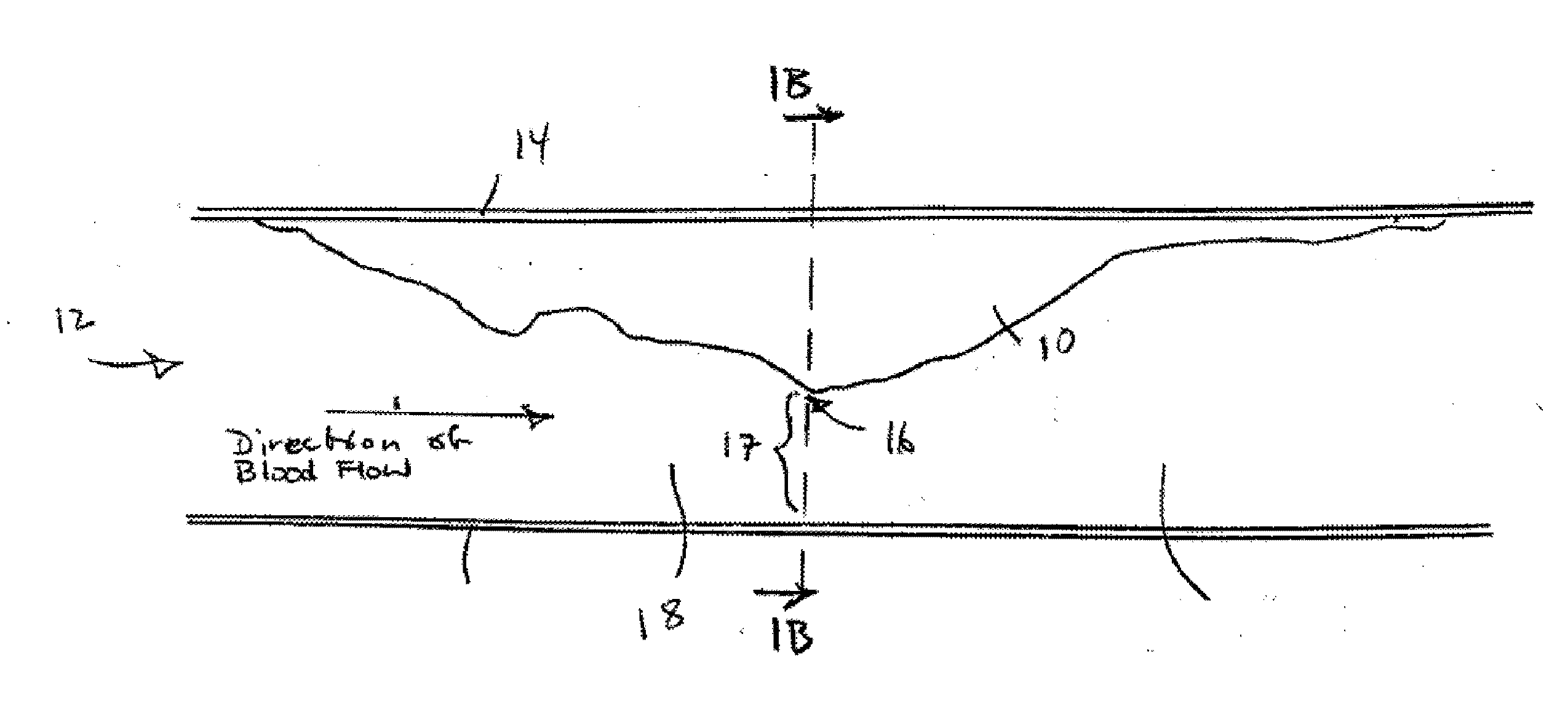Method for determining shear stress and viscosity distribution in a blood vessel
a blood vessel and viscosity distribution technology, applied in the field of determining the shear stress and viscosity distribution in the blood vessel, can solve the problems of atherosclerosis, subsequent thromboembolism, and one or more blood vessels being injured
- Summary
- Abstract
- Description
- Claims
- Application Information
AI Technical Summary
Benefits of technology
Problems solved by technology
Method used
Image
Examples
Embodiment Construction
[0025]FIG. 1A illustrates a plaque formation 10 in the lumen 12 of a blood vessel 14 (e.g. an artery) of a human being. As discussed, U.S. patent application Ser. No. 12 / 668,270 discloses that the change in the viscosity of blood at various shear rates may increase the potential for the rupture of plaque formation 10 by increasing the shear stress thereon. Another factor that may increase shear stress on the rupture of a plaque formation is the reduction in the dimension of lumen 12. Specifically, the reduction in the lumen increases the shear rate of blood thereby increasing shear stress on the plaque formation. Thus, for example, at the point of maximum blockage 16, where lumen 12 is narrowest, the shear rate of blood may increase, thereby increasing shear stress on plaque formation 10 and consequently increasing the chances of plaque rupture.
[0026]A method according to the present invention can be used to determine a value for the shear stress at a locus in an interior region of ...
PUM
 Login to View More
Login to View More Abstract
Description
Claims
Application Information
 Login to View More
Login to View More - R&D
- Intellectual Property
- Life Sciences
- Materials
- Tech Scout
- Unparalleled Data Quality
- Higher Quality Content
- 60% Fewer Hallucinations
Browse by: Latest US Patents, China's latest patents, Technical Efficacy Thesaurus, Application Domain, Technology Topic, Popular Technical Reports.
© 2025 PatSnap. All rights reserved.Legal|Privacy policy|Modern Slavery Act Transparency Statement|Sitemap|About US| Contact US: help@patsnap.com



